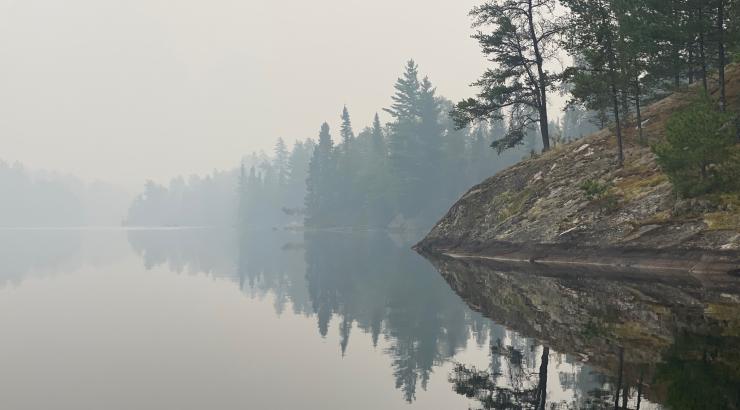For the first time, our federal government is conducting a thorough study to identify and assess the environmental, economic, and social impacts if sulfide-ore copper mining were to be allowed on Superior National Forest lands in the watershed of the Boundary Waters Canoe Area Wilderness. Claims by supporters of such mining that this study is unnecessary because such a study was “already done” are demonstrably untrue.
In December 2016, the U.S. Forest Service requested that the Secretary of the Interior exercise authority under the Federal Land Policy and Management Act (FLPMA) to withdraw 234,328 acres of federally-owned minerals in the watershed of the Boundary Waters from the federal mineral leasing program for 20 years. FLPMA requires environmental review (in this case, preparation of an environmental impact statement) to determine the effects on land, water, wildlife, people, and the economy if the proposed action is, or is not, undertaken. The two-year environmental review process began in January 2017.
Supporters of Antofagasta’s proposal to dig sulfide-ore copper mines in the watershed of the Boundary Waters oppose this FLPMA-mandated environmental review process. They wrongly claim that an environmental impact statement has already been prepared with respect to such mining. Proponents of this false claim point to the Final Environmental Impact Statement (FEIS) for the Federal Hardrock Minerals Prospecting Permits Project, which led to Records of Decision (ROD) by the U.S. Forest Service in May 2012 and by the U.S. Bureau of Land Management in September 2012. Those RODs authorized the issuance of 28 prospecting permits on Superior National Forest lands in the Boundary Waters watershed. Both state plainly that they are limited to prospecting – or exploration - and that any applications for federal mineral leases would require a new environmental review process. For example, the Forest Service ROD, which is signed by the Acting Supervisor of the Superior National Forest, says:
To be clear, this decision facilitates prospecting (i.e.exploration) activities described in the Federal Hardrock Minerals Prospecting Permits Project Final EIS. It is not a minerals development project (i.e. it is not a mining project). Issuance of prospecting permits by the Bureau of Land Management (BLM) based on Forest Service consent to them confers exclusive rights to the permit holder to prospect on and explore the specific lands within a permit area to determine the existence of a valuable mineral deposit. I understand that it is possible that a permit holder may apply for a noncompetitive lease to develop minerals in these permit areas should exploration find a valuable deposit. However, any subsequent application for a lease to develop minerals would be subject to a separate National Environmental Policy Act (NEPA) compliance process on its own merits, and require specific decision-making in which the Forest Service would exercise its consent to leasing authority (see Attachment 2, Forest Service Stipulation #9). (p.6)
The clear distinction that the ROD draws between prospecting and mining is directly applicable to the environmental review process that is currently underway. Because the EIS being prepared as a result of the proposed withdrawal will examine whether all sulfide-ore mining, and not just prospecting, will be barred for 20 years in the Boundary Waters watershed, the EIS will take into account factors such as the vastly greater impact that mining development (massive and varied infrastructure, excavations, and waste) would have in terms of the nature and degree of the disturbances; the areas affected; the lands, waters, flora, and fauna affected; and the amount of time over which the disturbances would occur. The prospecting permit EIS considered none of these things in the context of the development of mines and mine infrastructure.
The Boundary Waters Canoe Area Wilderness is a crown jewel of America and an international treasure. It is the most heavily-visited Wilderness Area in the United States because it is the most family-friendly and accessible, and because it is within relatively easy travel distances of major population centers in the heart of the nation. It is the largest Wilderness east of the Rockies and north of the Everglades. It is our only large lakeland Wilderness. It is the linchpin of the sustainable Wilderness-edge economy that characterizes Ely, Grand Marais, Lutsen, Tofte, and adjacent rural areas of the Minnesota Arrowhead.
The Boundary Waters is priceless and irreplaceable. The idea of putting a major sulfide-ore mining district in its watershed is irresponsible. Misrepresenting the efforts to assess the threat is inexcusable.


